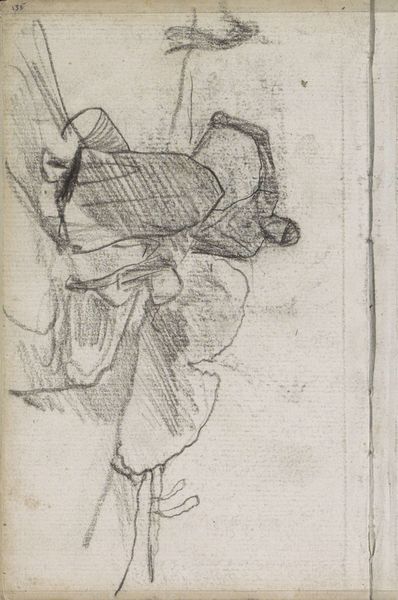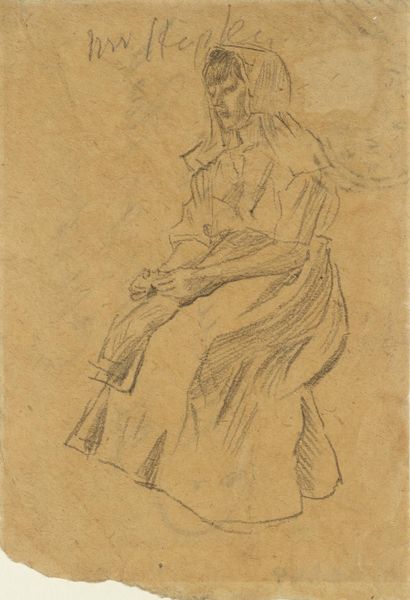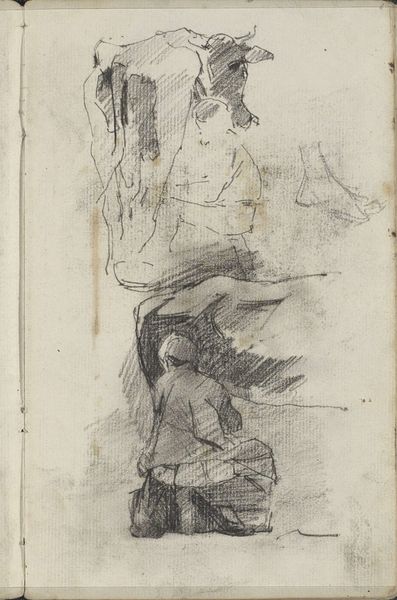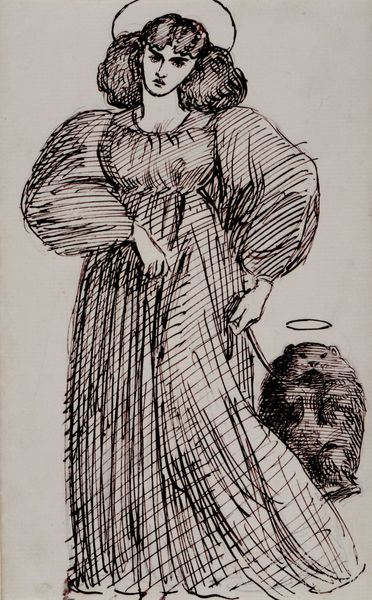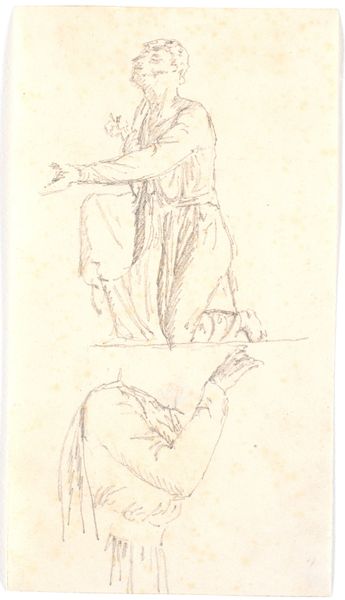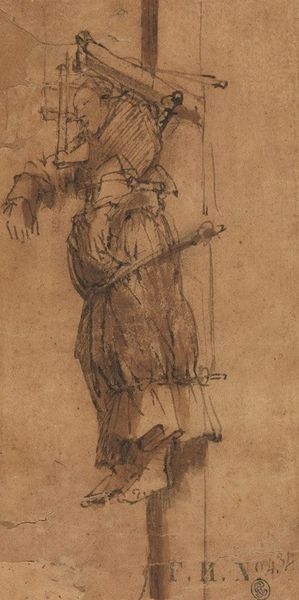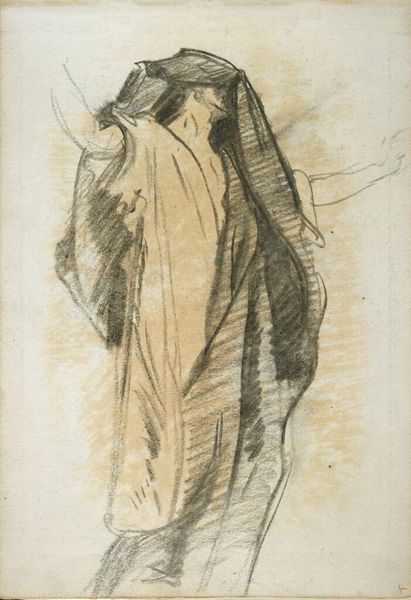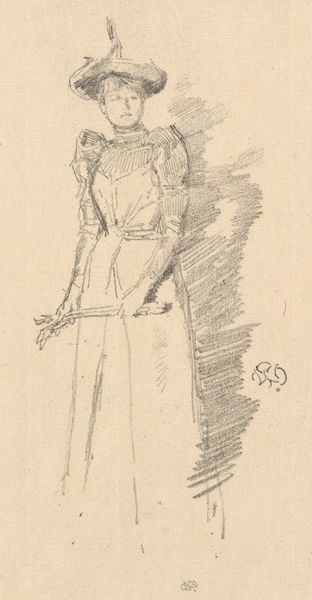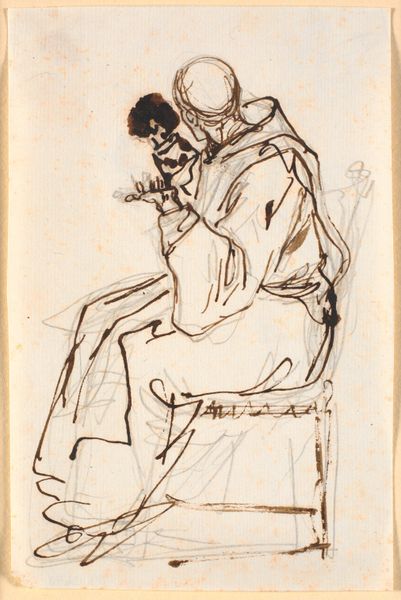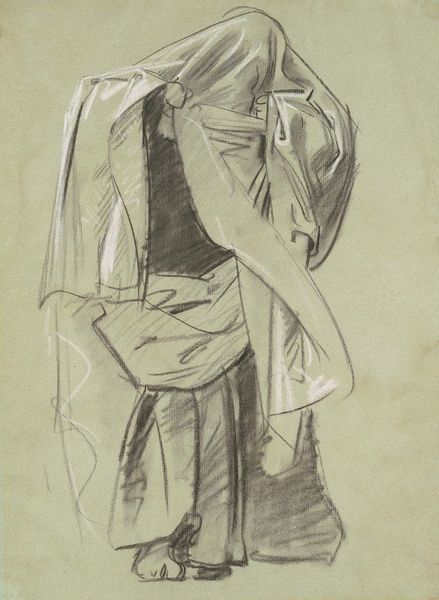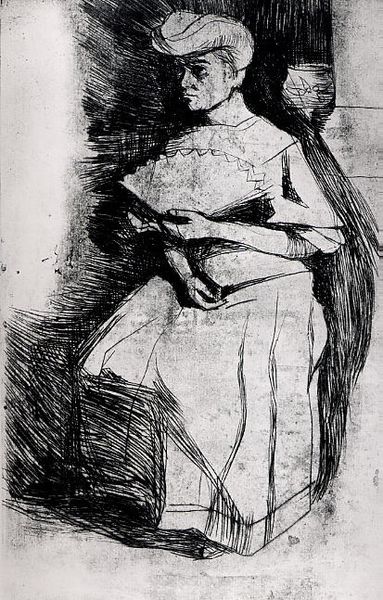
Dimensions: 19 x 12 cm
Copyright: Public domain
Alfred Dehodencq sketched this study for The Gypsy Dance in the 19th century with pen and brown ink. Dehodencq was known for his Orientalist paintings that romanticized North Africa and Spain, often depicting scenes of vibrant, everyday life. "Study for the Gypsy Dance" offers us a glimpse into the European fascination with Romani culture. However, it's important to critically examine the power dynamics at play. While the artwork seems to celebrate the Romani woman's dance, it simultaneously exoticizes her, perpetuating stereotypes that stripped her of individual identity and agency. What does it mean to represent a culture so different from one’s own? What are the ethical considerations when depicting marginalized communities? It makes you wonder about the emotional experience of the Romani woman. How did she feel being observed, sketched, and ultimately, turned into an object of artistic consumption?
Comments
No comments
Be the first to comment and join the conversation on the ultimate creative platform.
